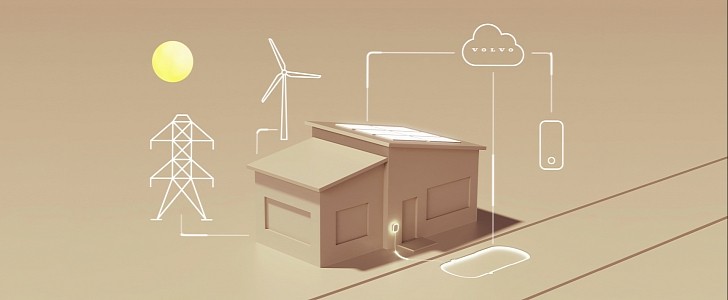On October 6, Volvo disclosed that the EX90 would be its first EV to present bidirectional charging. That means it will be able not only to draw electricity from the grid but also to give it back to the grid, a house, or electric equipment and appliances. It was only natural that the company decided to invest in PowerShare, a Chinese startup that wants to create virtual power plants.
The Shanghai Dianxiang Info Tech Company has developed “over 100 proprietary AI algorithms” that allow it to connect and aggregate “energy terminals such as industrial and residential energy storage, and charging stations, including clean energy terminals, such as solar panels and photovoltaic panels.” An electric car could also be considered a residential energy storage device if it offers bidirectional charging.
The startup also intends to provide smart charging tools, which means it will sell electricity at peak times and store it when it is cheaper. That’s crucial to dealing with some renewable energy sources such as solar and wind power. Their main disadvantage is that you can only collect what nature helps generate when it helps: you cannot have wind and solar generation whenever the grid needs more energy.
The investment in PowerShare was made through the Volvo Cars Tech Fund, the carmaker’s venture capital arm. It focuses on “artificial intelligence, electrification, autonomous driving, sustainability, and digital commerce” companies. In PowerShare’s case, Alexander Petrofski reinforced that the idea is to “make our vehicles a functional part of the energy ecosystem.” The head of Volvo Cars Tech Fund noted that this has to do with Volvo’s “most important goals: full electrification by 2030 and becoming fully climate-neutral by 2040.”
As we said when Volvo announced bidirectional charging with the EX90, these are noble goals. The issue is that using an EV as a mobile power bank will inevitably reduce its lifespan. So far, we have not seen any carmaker that proposed using its EVs as “virtual power plants” address the increased battery pack wear and how much it would cost to replace such components. Prices nowadays are around $20,000.
The startup also intends to provide smart charging tools, which means it will sell electricity at peak times and store it when it is cheaper. That’s crucial to dealing with some renewable energy sources such as solar and wind power. Their main disadvantage is that you can only collect what nature helps generate when it helps: you cannot have wind and solar generation whenever the grid needs more energy.
The investment in PowerShare was made through the Volvo Cars Tech Fund, the carmaker’s venture capital arm. It focuses on “artificial intelligence, electrification, autonomous driving, sustainability, and digital commerce” companies. In PowerShare’s case, Alexander Petrofski reinforced that the idea is to “make our vehicles a functional part of the energy ecosystem.” The head of Volvo Cars Tech Fund noted that this has to do with Volvo’s “most important goals: full electrification by 2030 and becoming fully climate-neutral by 2040.”
As we said when Volvo announced bidirectional charging with the EX90, these are noble goals. The issue is that using an EV as a mobile power bank will inevitably reduce its lifespan. So far, we have not seen any carmaker that proposed using its EVs as “virtual power plants” address the increased battery pack wear and how much it would cost to replace such components. Prices nowadays are around $20,000.









